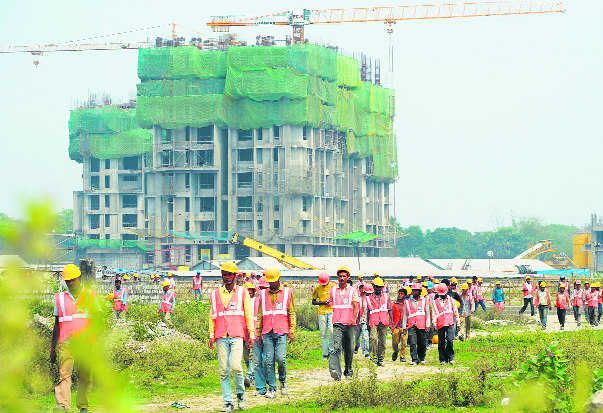
Lagging: Abundant supply of skilled manpower, which India lacks, attracts factories. The future prospect of having a trained labour force also appears poor.
Subir Roy
Senior Economic analyst
During a 17-month period ending this August, 56 companies relocated their production out of China. Of these, 26 went to Vietnam, 11 to Taiwan and eight to Thailand. The rear was brought up by India which got three, and Indonesia two.
Obviously, India’s ‘Make in India’ policy launched five years ago is making indifferent progress. Finance Minister Nirmala Sitharaman has said she would prepare a blueprint with which to attract to India companies going out of China. She can do worse than taking a look at a structured study, the latest (2019) Global Competitiveness Report brought out by the World Economic Forum. The Global Competitiveness Index, on which the report is based, has been refined since 2004 and the exercise offers a ready reckoner of what a country needs to do to go forward in the competitiveness stakes.
In the 2019 report India ranks 68 out of 141 countries, that is around the halfway mark. Vietnam emerges one rank ahead. Other comparable countries which are ahead of India are South Africa (rank 60), Indonesia (50) and Mexico (48). China is way ahead at 28, just one rank behind Malaysia (27), which has long been able to play host to factories migrating out of Japan and South Korea.
Where does India score and fail to do so according to this league table? Of the 12 attributes that make up the overall competitiveness score of a country, India does well (above rank 50) on four and not well (below rank 100) on five.
India does well on the attribute of macroeconomic stability and the size of its market and tops the global list on inflation control. On the financial sector, it gets a high score for its depth and stability. But the big issue is how long this will continue as a high level of non-performing assets at 10 per cent and low capital adequacy ratio are chipping away at the soundness of its banking system. Further, what is not contained in the report, and can affect India’s future status on this attribute, is the denouement of the trouble in which its non-banks are.
A powerful strength of the Indian system is its innovativeness in which it is ahead of most emerging economies and on a par with several developed countries. Venture capital is readily available and the growth of innovative companies is high. But here also some of the pluses are taken away by the low adoption of ICT. The current rise in adoption, with ubiquitous mobile telephony and rapidly rising data consumption, is speedy but a lot of catching up is needed.
A key shortcoming is the mixed performance on various aspects of governance. The level of corruption is average. Insolvency recovery is low, the cost and time it takes to start a business is high. The quality of land administration is very poor. Balancing this is a high level of judicial independence and an efficient legal framework. The efficiency of the legal framework in challenging regulation is high. But the police do not score very well, neither does the country on Press freedom.
The labour market scores poorly with low flexibility from insufficiently developed active labour policies. Wage flexibility is low and workers do not have much by way of rights. The participation of women in the work force is abysmal. The product market is restricted by low trade openness.
On infrastructure, India scores well on road, rail and air transport. But the quality and availability of power is poor, though gains have been made recently on reaching power to households.
Where India also scores poorly is in several areas of social capital. Life expectancy is low, one of the shortest outside Africa and below the South Asian average. Drinking water is unsafe for most. Mean years of schooling is low.
India also needs to raise its skills level. Factories will not come to a country unless there is an abundant supply of skilled manpower, of which there is a paucity. Plus, the future prospect of having a trained labour force appears poor.
A specific set of policy prescriptions were offered earlier this year by Raghuram Rajan and Abhijit Banerjee (who won the Nobel), along with several other economists while addressing issues that also affect competitiveness. To create jobs and raise exports — both the aims served speedily by being able to attract relocating factories — the country must create a better business environment.
This is best done by learning from the experiences of different Indian states in the fields of land acquisition, industrial regulation, provision of power and logistics and environmental clearance. They feel a centre states productivity council can deliver this through special economic zones, where land, environmental clearance and transportation infrastructure are made available in a coordinated manner, so that things get going speedily.
The essence of this model is to keep learning while doing. For a good reason, the country has three layers of government — Central, state and local. For an equally good reason, they need to be masters of their domains to get the best results. And for this they need to talk to one another to evolve a consensus model at a forum like the council referred to above. The beauty of consensus is that it takes long to achieve, but once it is there progress takes place at a superior speed.



























